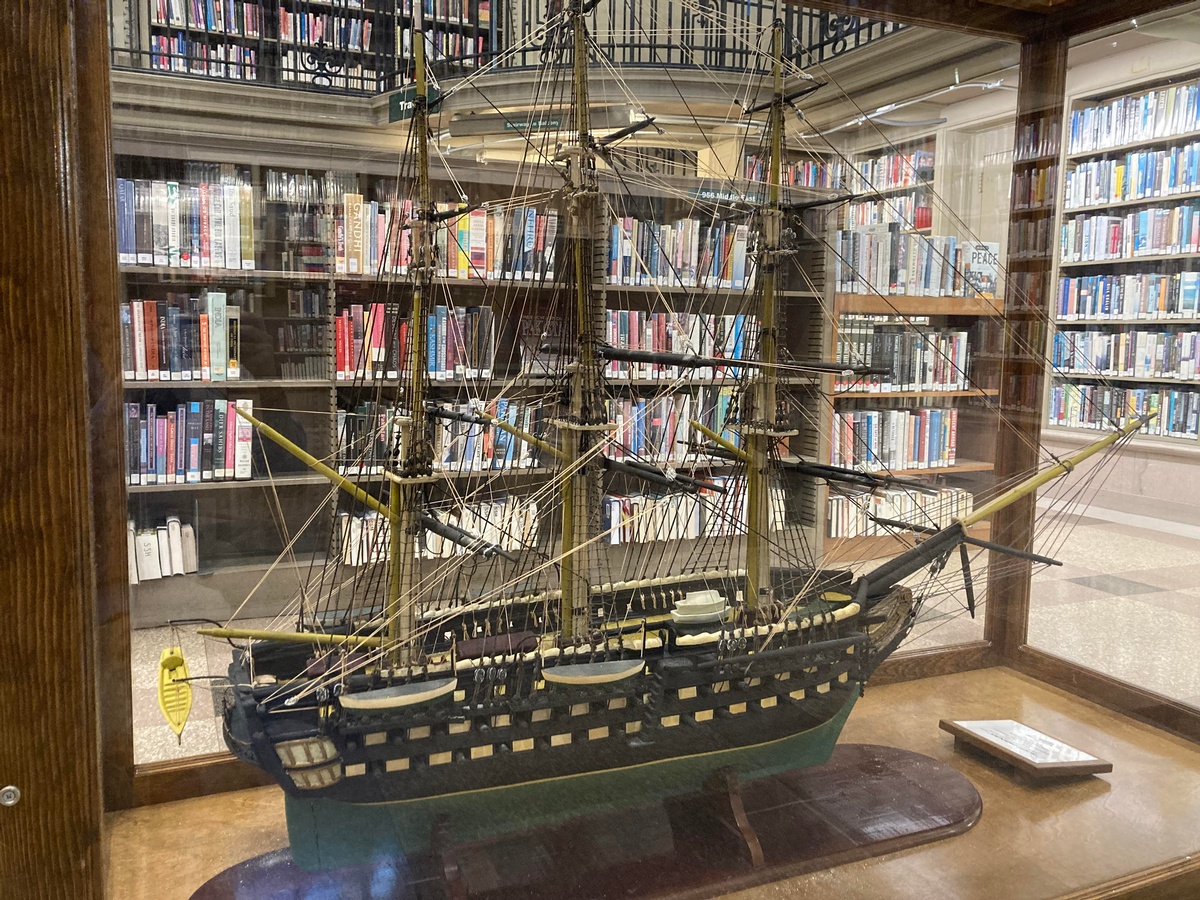Looming majestically within the Parkway Central Library’s Social Sciences and History Department, an intricately crafted model of the USS North Carolina stands as a testament to America’s naval prowess. Although the model dates back to 1840, crafted by an anonymous New York sailor, the actual ship’s roots are older, showcasing early U.S. Navy shipbuilding skills developed in Philadelphia at the nation’s first official shipyard.
The early 19th century saw America as a nation in peace, yet involved in global trade amidst European conflicts. American merchants, rich in diverse goods, sought to trade globally but faced threats from Barbary pirates and interference from European powers like Britain and France. In response, the U.S. Congress initiated the construction of six frigates in 1794, followed by additional military vessels to protect trade interests. Despite these efforts, the powerful British navy proved a formidable challenge, compelling America to impose trade embargoes that ultimately failed.
The conflict escalated into the War of 1812 with Britain, prompting the U.S. to invest in ships of the line, armed to engage enemy vessels from the sides. Although these ships weren’t completed before the war concluded, they marked America’s commitment to strengthening its naval defenses. Post-war, America enjoyed peace and expanded its navy through the 1820s, ensuring the protection of international trade routes.
Constructed in 1824, the North Carolina became the third 74-gun ship of the line. Overseen by Joshua Humphreys, often hailed as the father of the American Navy, its construction began in 1819 at the Philadelphia Navy Yard. This yard, established in 1801, initially spanned about 17 acres. However, advancements in shipbuilding necessitated a move to League Island, Philadelphia, in 1875.
Under Commodore John Rodgers, the North Carolina embarked on missions that included opening trade with Turkey and safeguarding American interests during South American conflicts. Despite its armament, the ship never encountered battle, serving instead as a diplomatic and trade envoy. It returned to the U.S. in 1839, where it remained anchored in the New York Navy Yard as a receiving ship until 1865.
Rare photo of the North Carolina as a receiving ship in the New York Navy Yard during the 1860s
Credit: Naval History and Heritage Command
USS North Carolina Facts:
- The North Carolina was a wooden sailing ship.
- It weighed 2,633 tons.
- Its length was 196 feet 3 inches (59.8 meters), and its width was 53 feet 6 inches (16.3 meters).
- The ship could accommodate up to 820 people.
- It carried 34 42-pounder and 36 32-pounder cannons, known as pounders, capable of reaching over 2,000 yards.
- The remaining weapons were Carronades.

Franklin Gazette, vol. V, no. 775, 5 Sept. 1820, p. [3]. Retrieved from: America’s Historical Newspapers Database
Further Reading:
- Bruce, A. P. C., and William B. Cogar. An Encyclopedia of Naval History. New York: Facts on File, 1998.
- Dorwart, Jeffery M., and Jean K Wolf. The Philadelphia Navy Yard: From the Birth of the U.S. Navy to the Nuclear Age. Philadelphia: University of Pennsylvania Press, 2001.
- Jenkins, Mark Collins, and David Taylor. The War of 1812 and the Rise of the U.S. Navy. Washington, D.C.: National Geographic, 2012.
- Naval History Division, et al. American Ships of the Line. Washington: U.S. Government Printing Office, 1969.
- Silverstone, Paul H., and Ian W. Toll. The Sailing Navy, 1775-1854. Annapolis, Md.: Naval Institute Press, 2001.
Have a question for Free Library staff? Please submit it to our Ask a Librarian page and receive a response within two business days.
Read More Here







Be First to Comment